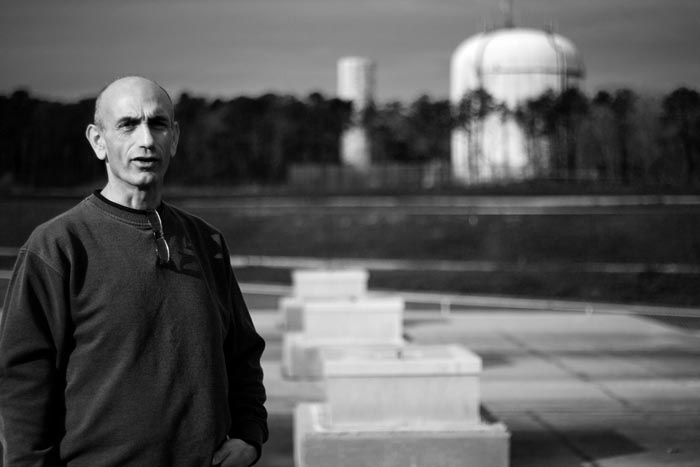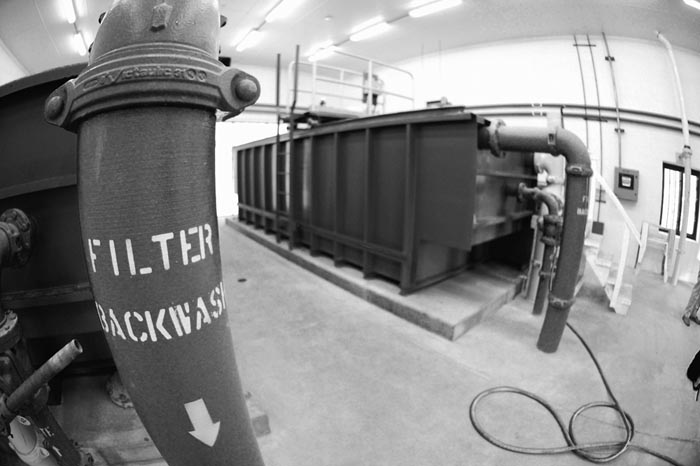Islanders may not be aware that they are on a regimen of antidepressants, antibiotics and hormone therapy, but tests of Island wastewater have revealed that drugs and personal care products are present in the environment, if only at levels measured in the parts per trillion. While it is unclear what effect, if any, the presence of these highly-diluted chemicals has on the environment, Oak Bluffs could become the first wastewater treatment plant on the Cape and the Islands to remove them from their water supply.
“When you wake up each morning you brush your teeth, use soap to wash your hands, you may put cologne on or aftershave, you may wear mascara or use hair spray,” said Oak Bluffs wastewater plant manager Joe Alosso on Thursday. “Then you throw into it pharmaceuticals or prescription drugs, even stuff as common as Tylenol, Advil and cough suppressants — all of this stuff is eventually excreted and ends up in the water. That seems to be the emerging concern.”
At last week’s special town meeting, Oak Bluffs voters transferred $100,000 into the wastewater department’s treatment upgrade account from funds left over from the purchase of land along Pennsylvania avenue for new effluent beds. The two beds will allow the town to treat an additional 250,000 gallons per day, on top of its already 350,000-gallon capacity at Ocean Park (that project will also give the town two new Little League baseball fields). Mr. Alosso said after the transfer, the town will have just under $1 million to put toward a new facility to remove pharmaceuticals and personal care products from town wastewater. He said he expects the project to cost between $2.5 and $3.5 million, and at the April town meeting he may approach the town for more funding. But like the $2.4 million Pennsylvania avenue project, almost half of which was funded through a USDA grant, he is hopeful the town can again attract federal funding. He expects the project to be completed in three years.
The move to treat wastewater for pharmaceuticals and personal care products is spurred partly by recent state legislation requiring that new leaching beds near a municipal well be treated for such pollutants. And Mr. Alosso said there is also the precautionary principle.
“We didn’t know that nitrogen would be an issue soon enough, and now we’re reacting to it,” he said. “It would be nice to not to have to react to pharmaceuticals and personal care products if we know that those are going to be causing a problem in the future.”
While a Government Accountability Report issued in September says there are no known human effects from pharmaceuticals in drinking water at such low levels, there have been wider environmental effects noted, especially on marine life. Studies of small mouth bass and fathead minnows cited in the GAO report have found reproductive abnormalities in the presence of endocrine-disrupting chemicals such as those found in birth control pills and hormone treatments, also present in wastewater effluent. Antibiotics pose another challenge.
“What happens as we get these stronger and stronger doses to fight viruses, as we excrete these pharmaceuticals, the viruses can become immune to them,” Mr. Alosso said. “They build up a resistance because that stuff is in the water.”
Oak Bluffs may have a unique challenge on the Island in that it is home to both a hospital and several elderly care facilities, each of which have the potential to contribute significant quantities of prescription drugs. Those concerns have been borne out in off-Island lab tests of treated Vineyard wastewater that have pinpointed the presence of pharmaceuticals and personal care products.
“We do tend to see higher numbers in Oak Bluffs than in the other towns,” said Mr. Alosso. For this reason the hospital sponsors prescription drug return days, when Islanders can return unused medication.
On Thursday Mr. Alosso walked the grounds of the Oak Bluffs wastewater treatment plant which, like Edgartown and Tisbury holds the distinction of being a tertiary treatment plant. In the Oak Bluffs plant’s bowels is an ongoing, carefully-controlled science experiment, where cultures of microorganisms break down organic matter in the surprisingly inoffensive-smelling gray foamy liquid that churns in what Mr. Alosso refers to as his “crockpots.” The microorganisms are then starved of oxygen and forced to find it in the nitrates that would ordinarily be released to the watershed of the Lagoon, where nitrogen from septic systems has already affected the pond’s productivity. Instead the microorganisms split the molecule, consuming the oxygen in the nitrate and producing nitrogen gas that is vented above the plant. The water is then sent to a building across the street to be filtered through sand beds and disinfected with UV lights that provide a glow to the channel of drinking-water-quality effluent underfoot, bound for the new leaching beds across the street. Next to this building is where Mr. Alosso envisions the new facility.
In 2008 an Associated Press investigation found that pharmaceuticals were present in the drinking water of at least 41 million Americans. Mr. Alosso said that while Oak Bluffs is required to treat for the compounds, the other Island towns should pursue it as well.
“Morally we should all be looking at it whether you’re in the watershed of a municipal well or not,” he said. “Someone downstream from your wastewater treatment plant probably has a private well.”






Comments
Comment policy »